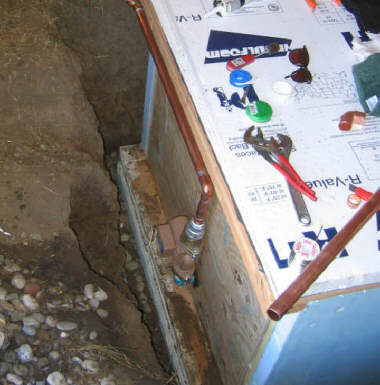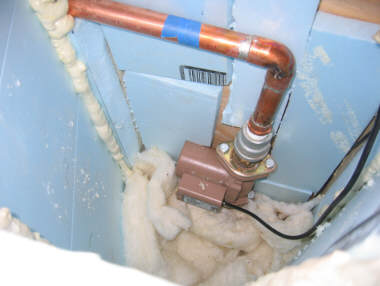
Search
The Renewable Energy site for Do-It-Yourselfers
Keeping Pumps
(and other equipment) From Freezing
| If your solar water heating system pump is located in an area that
is susceptible to freezing temperatures, and your heat transfer fluid is
plain water (not antifreeze), you will need to protect the pump and
connecting plumbing from freezes. Other equipment and plumbing in
the system may also need protection from low temperatures.
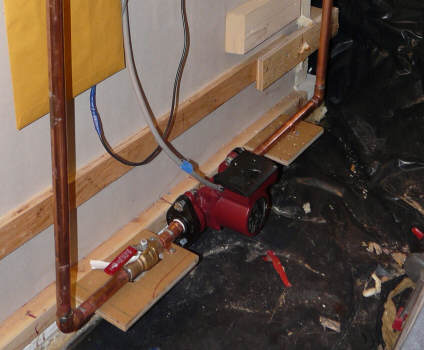
Pumps mounted in the open in areas that can go below
freezing require some means of freeze protection.
This page gives a couple ways that people have done this. |
|
Stealing Heat from the Storage Tank to Keep the Pump Warm
On my Solar Shed project, the pump is mounted just outside the heat storage
tank. By running some of the tank insulation outside the pump, the heat
loss from the tank keeps the pump above freezing.
By mounting the pump close to the tank wall and then extending part of the
tank insulation outside the pump chamber will stay at a temperature that is
intermediate between the tank water temperature and the outside temperature.
You want to be careful to not put so much insulation over the pump that it
overheats when running on a hot day. You want to monitor the pump chamber
temperature for a while to make sure it stays within limits.
I've monitored the temperature in both cold and hot conditions, and the pump
area has always stayed well within the pump's allowable temperature range.
I've used the arrangement shown above for about 6 years, and have had no
problem -- this has included ambient temperatures as low as 30 F below zero high
temperatures into the 90's F.
Plumbing that needs protection in the area of the tank can be protected in
the same way. The picture below shows the pipes that deliver heat from the
tank to the house. The part of these pipes that extend above ground need
freeze protection.
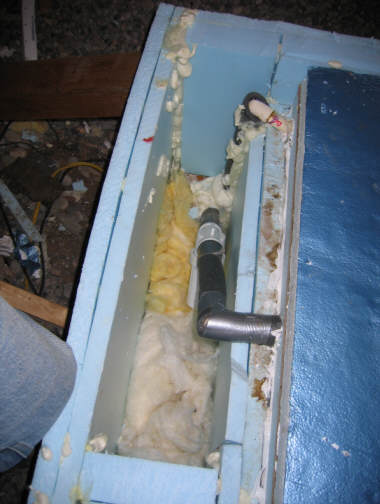
Pipes leaving the tank with the tank insulation extended outside the pipes to
protect them.
This picture has some of the insulation removed.
An Active Freeze Protection System
The SolarFriend site
shows a simple way to protect a pump from freezing conditions.
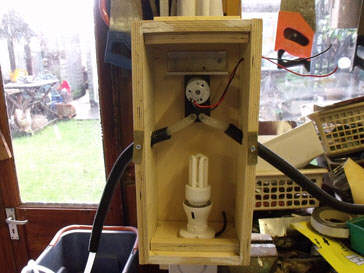
The lightbuld is turned on by a freeze protection thermostat and keeps the
pump chamber warm.
Details
here...
Other Equipment
The differential controller for my solar space heating system is located out
in the Solar Shed, which sees quite low temperatures.
The controller is not approved to run in these low temperatures.
The controller could be handled in the same way as the pump, but just placing
it where it will receive some heat from the storage tank, but it may be
difficult to make sure that it stays within its approved temperature range with
this approach.
The scheme I've been using is to place the controller in a box made from
rigid foam board insulation. The insulation thickness is chosen such that
the standby power use of the controller keeps the insulated chamber above the
low end of its operating range in cold weather. In the summer, I remove
the front cover of the insulated box so that there is no chance of overheating
the controller.
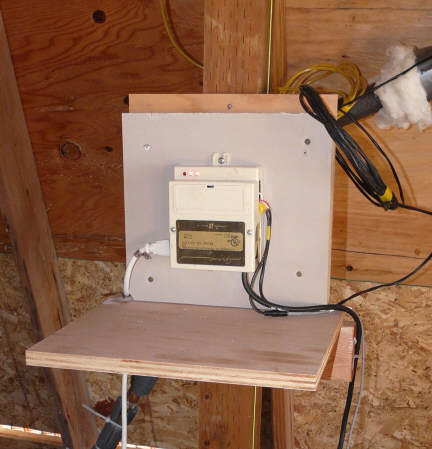
Controller with the front part of the insulating box removed for the summer.
Got any good ideas on keeping equipment within its required temperature
range? Please
send them in...
Gary January 27, 2011

